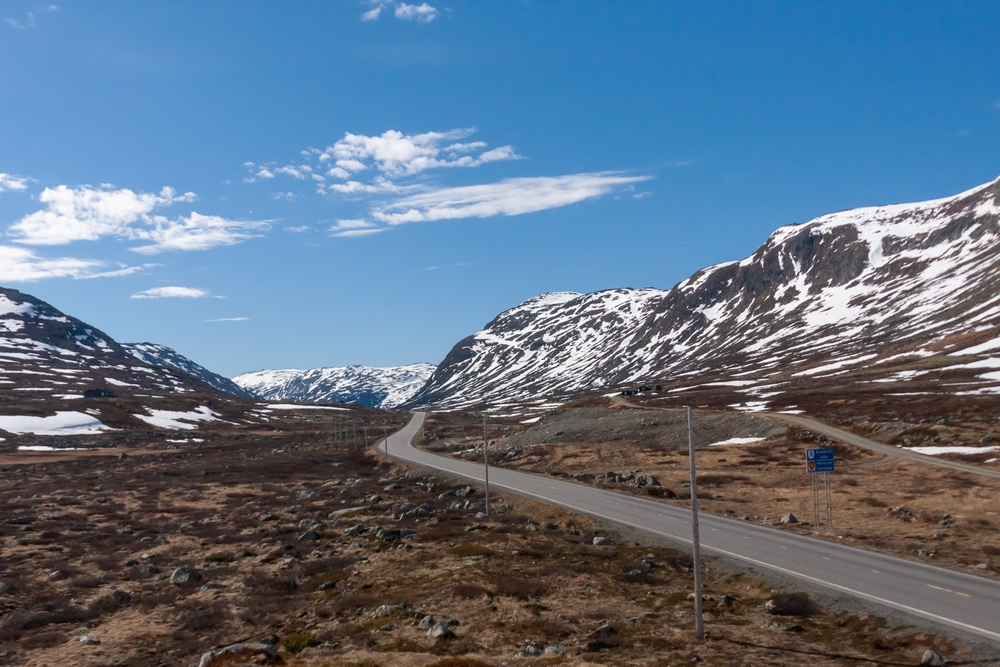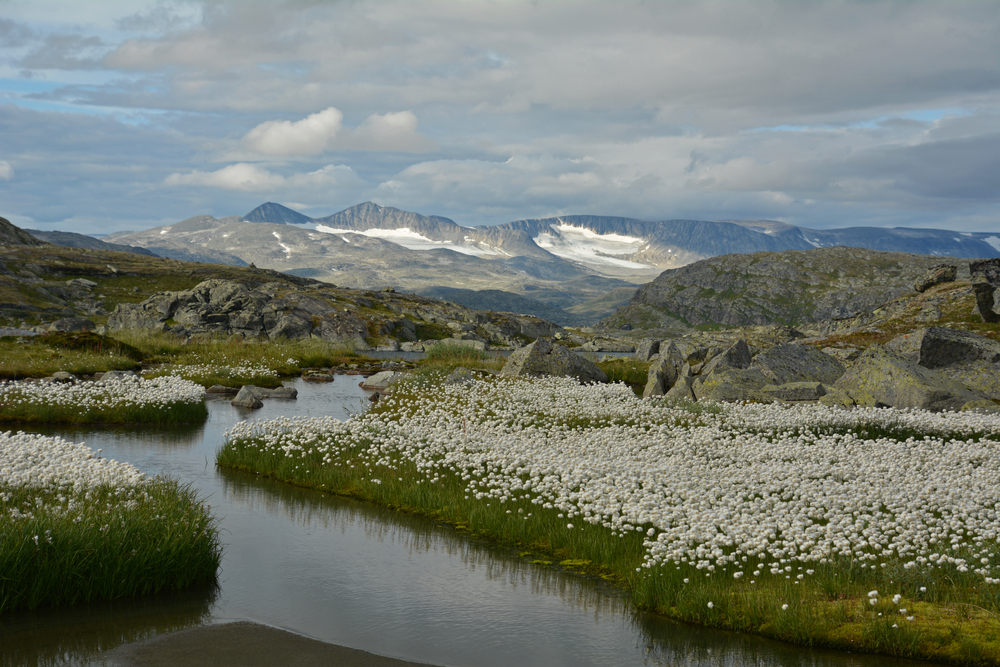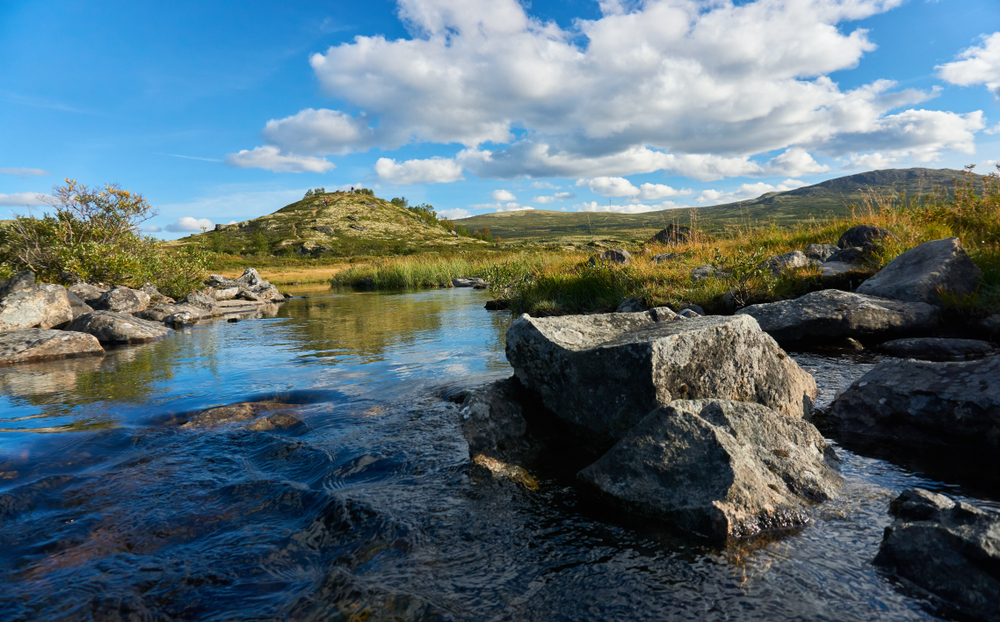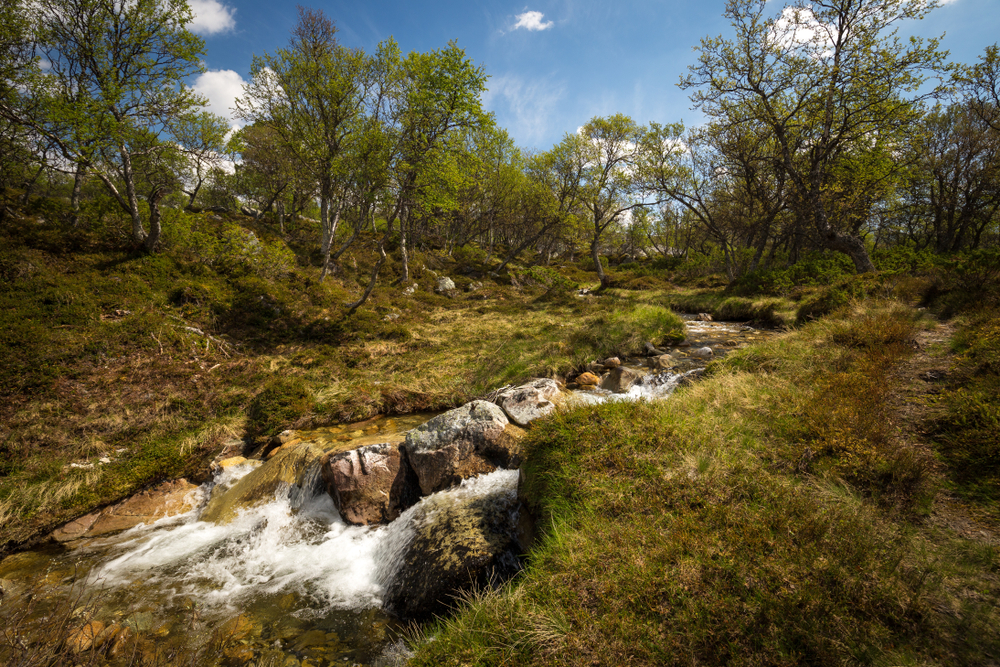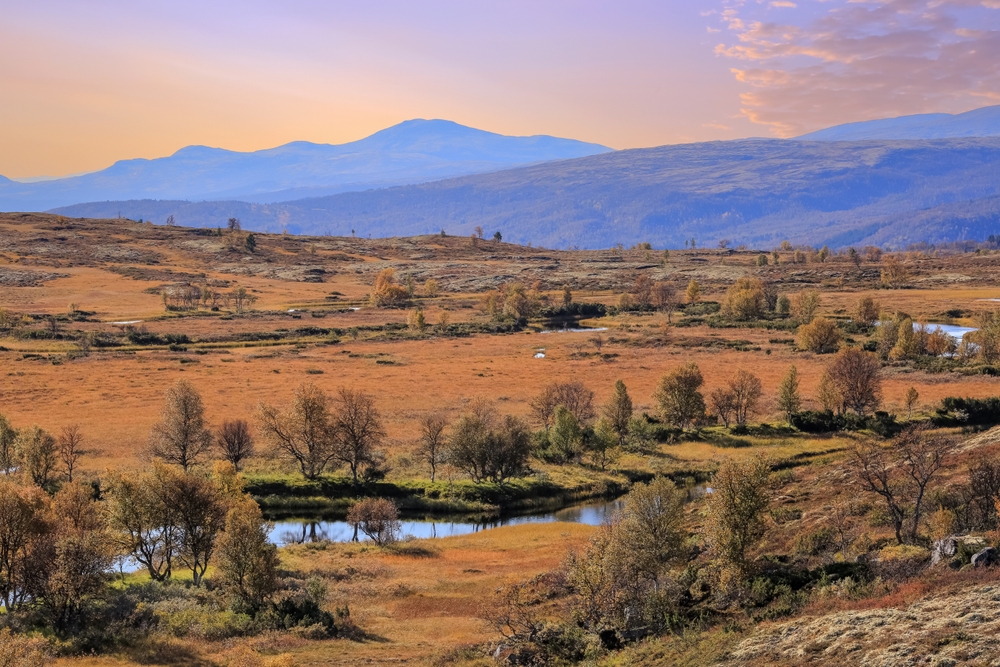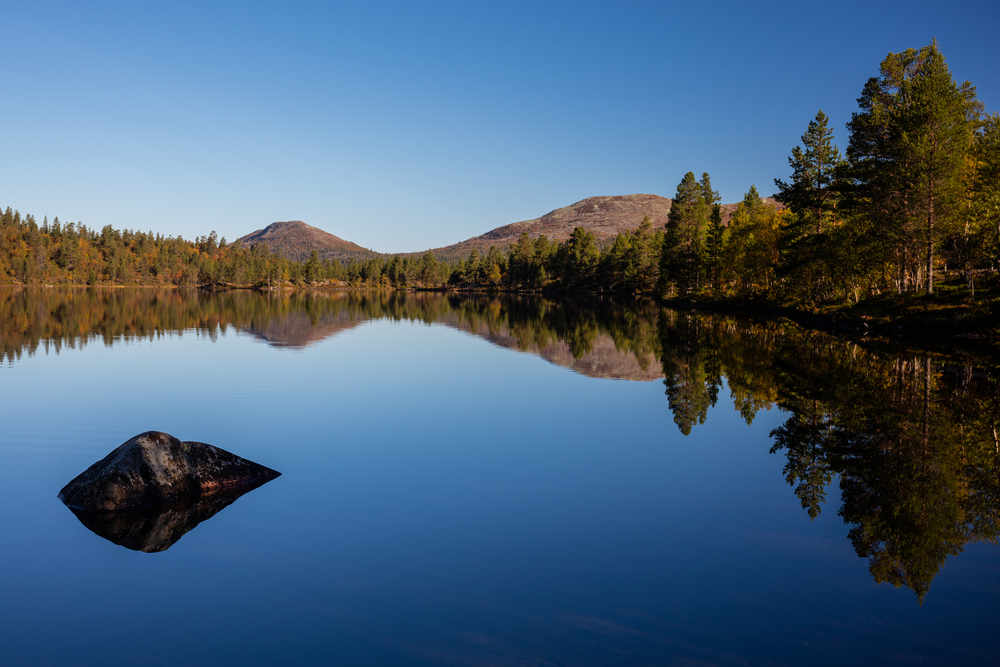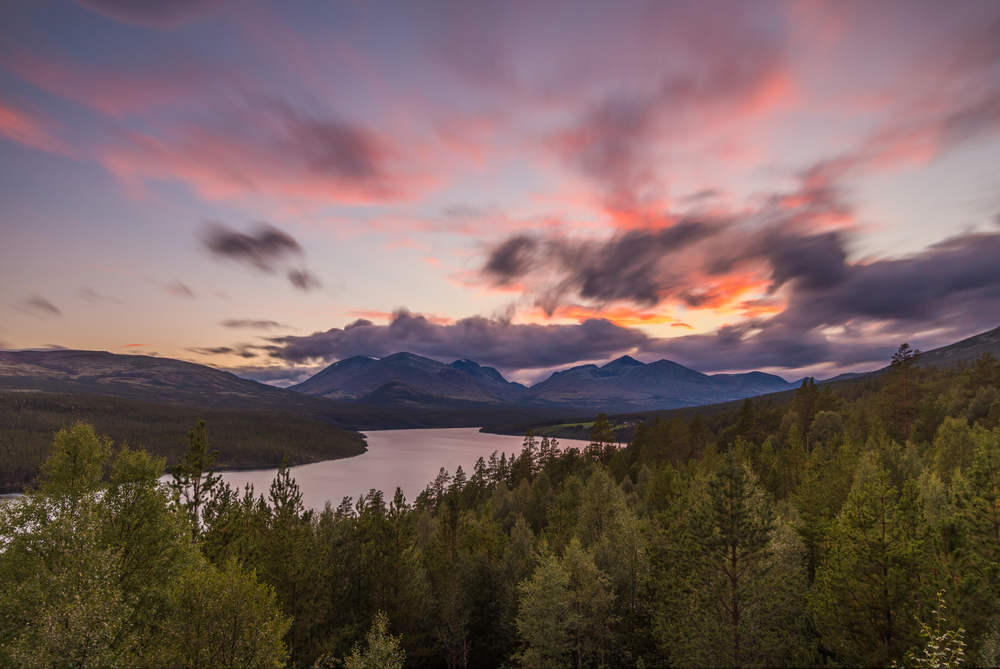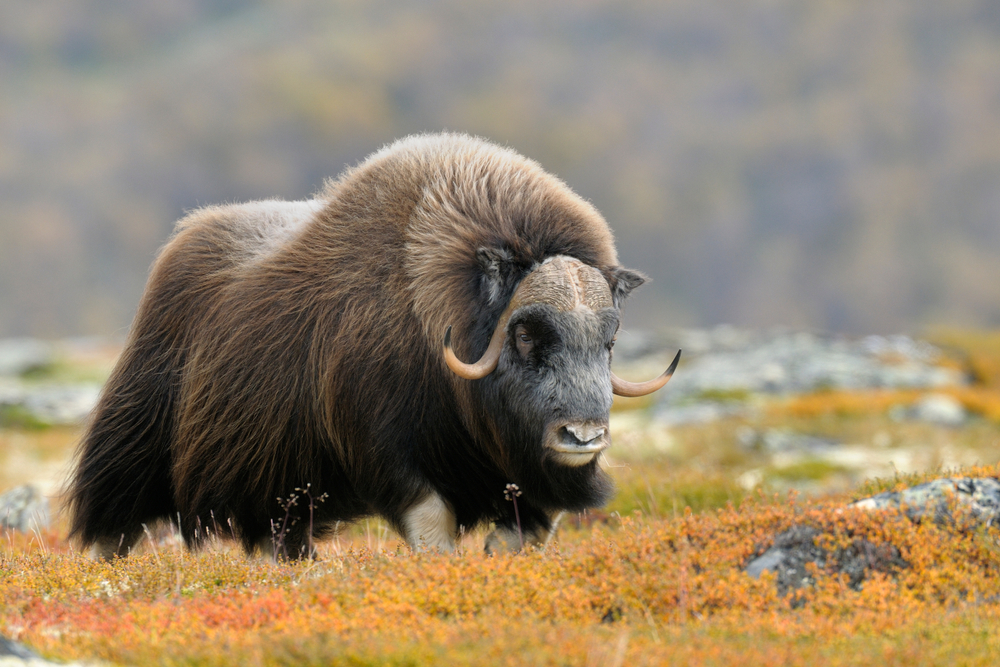Hallingskarvet Overview
Hallingskarvet National Park, or Hallingskarvet nasjonalpark in Norwegian, is a breathtaking protected area located in southern Norway. Spanning 173 square miles (450 square kilometers), the park lies in Viken and Vestland counties, stretching across the municipalities of Hol, Ulvik, and Aurland.
It was established in 2006 to preserve the dramatic alpine landscapes and fragile ecosystems of the Hallingskarvet mountain range. The park is dominated by the Hallingskarvet massif, a long, towering ridge with steep cliffs that define the skyline and create a stunning visual contrast against the surrounding valleys and plateaus.
One of its most prominent peaks, Folarskardnuten, stands at 1,933 meters (6,342 feet), making it the highest point in Buskerud and an iconic feature of the park.
The park’s terrain is characterized by its rugged, glacially sculpted landscapes, with vast plateaus, steep rock walls, and deep valleys. The upper reaches of Hallingskarvet are largely barren, covered in permafrost and scattered with scree and boulders left by retreating glaciers.
However, at lower elevations, the landscape transitions into heathlands, wetlands, and alpine meadows dotted with mosses, lichens, and resilient plant species such as mountain avens and dwarf birch. The park is home to numerous small lakes, tarns, and glacial rivers, which are vital for the region’s biodiversity. The Ustekveikja River, originating from the park, flows eastward and supports a delicate aquatic ecosystem.
Hallingskarvet National Park is a sanctuary for diverse wildlife, particularly species adapted to Norway’s harsh mountain climate. Among the most notable mammals are the wild reindeer, which migrate across the plateau in search of grazing areas. The park is also home to arctic foxes, wolverines, and red deer, though sightings can be elusive. Small mammals such as lemmings and mountain hares are more commonly seen, particularly in the tundra-like regions.
Birdwatchers can expect to see golden eagles, rough-legged buzzards, and gyrfalcons soaring above the ridges, while rock ptarmigans and snow buntings thrive in the alpine zones. Wetlands and meadows host species such as common snipe and Eurasian dotterel, adding to the park’s rich avian diversity.
A popular destination for outdoor enthusiasts, Hallingskarvet National Park offers hiking, climbing, and backcountry skiing opportunities. The Prestholtstien trail, leading up to the Hallingskarvet plateau, is one of the most well-trodden routes, providing spectacular views of the surrounding valleys.
During winter, the park becomes a prime location for cross-country skiing and snowshoeing, drawing visitors eager to experience its pristine snowscapes. The nearby Geilo ski resort, located just outside the park’s boundary, is a gateway for those looking to explore the wilderness with guided tours and marked trails.
Mountain biking is also permitted in designated areas, offering a thrilling way to traverse the rolling terrain.
Conservation efforts within Hallingskarvet National Park have focused on protecting its fragile alpine ecosystems, particularly concerning the preservation of wild reindeer migration routes and preventing over-tourism. Climate change poses an ongoing challenge, as shifting temperatures threaten permafrost stability and native flora.
However, strict regulations on land use, responsible tourism initiatives, and active wildlife monitoring programs have contributed to the park’s successful management. The balance between recreation and preservation is carefully maintained, ensuring that Hallingskarvet remains an untouched haven for nature and wildlife for generations to come.








































































